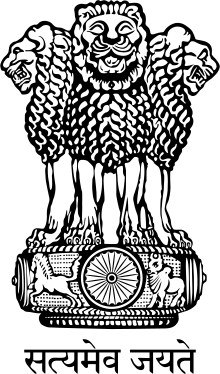India–Malaysia relations
India–Malaysia relations refer to bilateral foreign relations between India and Malaysia. India has a high commission in Kuala Lumpur,[1] and Malaysia has a high commission in New Delhi[2] and a consulate general in Chennai and Mumbai.[3][4] Both countries are full members of the Commonwealth of Nations,[5] Asian Union and G15.[6] India and Malaysia are also connected by various cultural and historical ties that date back to antiquity.[7] The two countries are on excellently friendly terms with each other seeing as Malaysia is home to a strong concentration of Indian immigrants. Mahathir Mohamad, the fourth and longest serving Prime Minister of Malaysia has Indian ancestry.[8] On trade front their bilateral trade volume stands at $10.5 billion and is poised to reach $25 billion by 2020.
 | |
India |
Malaysia |
|---|---|
Following the visit by then Prime Minister Najib Razak in 2017, both India and Malaysia agreed to expand co-operation in new chapter in areas like infrastructures development and building of smart cities. Many in the Indian government and their community feel the ties under 7th Malaysian Prime Minister Mahathir are decreasing since he favours Pakistan.[9]
History
Ancient relations
Modern history
Official diplomatic relations between both modern states was established in 1957, following the Federation of Malaya independence.[10] Since then, both countries leaders has made several visits to each others.[11]
In 2020, following comments from Malaysian Prime Minister Mahathir Mohamad speaking in opposition to the revocation of Kashmir's special status and the passing of the Citizenship Amendment Act, India imposed restrictions on Malaysian palm oil imports.[12]
Economic relations
From 2000–2013, Malaysia is the 19th largest investor in India with cumulative FDI inflows valued at US$618.37 million. More than US$6 billion Malaysian investments also come in the form of telecommunications, healthcare, banking and construction projects.[11] Trade between the two countries has increased from just US$0.6 billion in 1992 to US$13.32 billion in 2012. Beside that, Indian industrial, IT and healthcare companies also investing in Malaysia along with around 150,000 Indians (including 10,000 Indian expatriates) skilled and semi-skilled workers been employed in the country in the sectors of IT, manufacturing and banking.[11] Malaysian companies as well participating in many infrastructure projects across different Indian states.[9]
In 2017, India and Malaysia signed a new business deal amounting to U$36 billion with the exchange of 31 business memorandum of understanding (MoUs), the largest in the history of economic relations between the two countries.[13] There is also a Malaysia India Business Council.[14]
Education relations
Between the 1960s and 1970s, around 30,000 Malaysian students have studied in Indian educational institutions, mostly in the medical field, with over 30% of the doctors in Malaysia today having been educated in India.[15] The Indian government also provides scholarship to Malaysian students. Due to many Malaysian medical students' need to pursue their education in India, the Manipal Global Education Group agreed to set up their campuses in Malaysia.[15]
Security relations
Since before the formation of Malaysia, many of the country security forces members are trained in India.[16] In counter to the growing Chinese influence, India has expressed to increase military and security co-operation with Malaysia.
See also
References
- "Home". High Commission of India in Kuala Lumpur, Malaysia. Retrieved 3 March 2017.
- "Official Website of High Commission of Malaysia, New Delhi". Ministry of Foreign Affairs, Malaysia. Retrieved 3 March 2017.
- "Official Website of Consulate General of Malaysia, Chennai". Ministry of Foreign Affairs, Malaysia. Retrieved 3 March 2017.
- "Official Website of Consulate General of Malaysia, Mumbai". Ministry of Foreign Affairs, Malaysia. Retrieved 3 March 2017.
- "Commonwealth Secretariat - Member States". Commonwealth of Nations. Retrieved 3 September 2011.
- The official website Archived 12 September 2017 at the Wayback Machine adopts the "G-15" orthography (with a hyphen) in order to distinguish an abbreviated reference to this group -- contrasts with other similarly named entities.
- "Culture". High Commission of India in Kuala Lumpur, Malaysia. Retrieved 3 September 2011.
- Patrick Pillai (14 October 2015). Yearning to Belong: Malaysia's Indian Muslims, Chitties, Portuguese Eurasians, Peranakan Chinese and Baweanese. ISEAS-Yusof Ishak Institute. pp. 24–. ISBN 978-981-4519-67-0.
- Elizabeth Roche (1 April 2017). "India, Malaysia vow to strengthen economic ties". Live Mint. Archived from the original on 2 April 2017. Retrieved 2 April 2017.
- Malaysia did not come into existence until 1963.
- "Bilateral Relations". High Commission of India in Kuala Lumpur, Malaysia. Retrieved 3 March 2017.
- "Political chill at centre of India's curbs on Malaysian palm oil". The Straits Times. 17 January 2020. Retrieved 18 January 2020.
- Paul Gabriel (4 April 2017). "Historic day as Malaysia and India ink pacts worth RM158.68bil". The Star. Retrieved 4 April 2017.
- "Home". Malaysia India Business Council. Retrieved 12 December 2017.
- "Cooperation in the Field of Education". High Commission of India in Kuala Lumpur, Malaysia. Retrieved 3 March 2017.
- "Defence co-operation". High Commission of India in Kuala Lumpur, Malaysia. Retrieved 3 March 2017.
Further reading
- Cœdès, George (1968). Walter F. Vella (ed.). The Indianized States of Southeast Asia. trans.Susan Brown Cowing. University of Hawaii Press. ISBN 978-0-8248-0368-1.CS1 maint: ref=harv (link)
- Lokesh, Chandra, & International Academy of Indian Culture. (2000). Society and culture of Southeast Asia: Continuities and changes. New Delhi: International Academy of Indian Culture and Aditya Prakashan.
- R. C. Majumdar, Study of Sanskrit in South-East Asia
- R. C. Majumdar, India and South-East Asia, I.S.P.Q.S. History and Archaeology Series Vol. 6, 1979, ISBN 81-7018-046-5.
- R. C. Majumdar, Suvarnadvipa, Ancient Indian Colonies in the Far East, Vol.II, Calcutta,
- R. C. Majumdar, Hindu Colonies in the Far East, Calcutta, 1944, ISBN 99910-0-001-1 Ancient Indian colonisation in South-East Asia.
- R. C. Majumdar, History of the Hindu Colonization and Hindu Culture in South-East Asia
- Daigorō Chihara (1996). Hindu-Buddhist Architecture in Southeast Asia. BRILL. ISBN 90-04-10512-3.
External links
| Wikimedia Commons has media related to Relations of India and Malaysia. |

